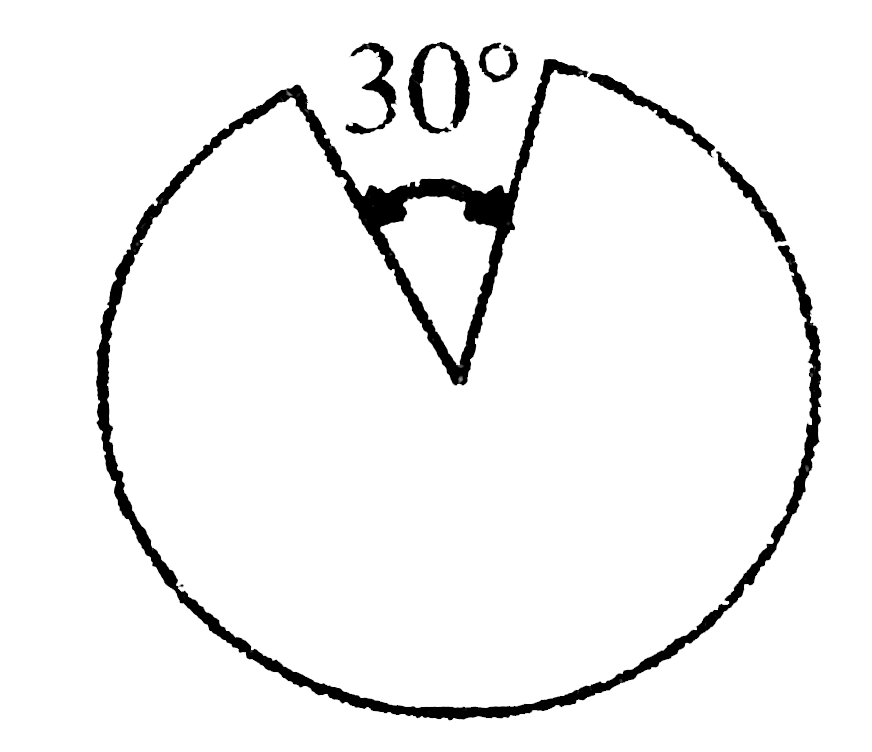Two rings of radius R and nR made of same material have the ratio of moment of inertia about an axis passing through center is 1:8. The value of n is
(a)2
(b)2√2
(c)4
(d)12
The correct Answer is:A
To solve the problem, we need to find the value of n given that the ratio of the moments of inertia of two rings is 1:8. The first ring has a radius R and the second ring has a radius nR.
1. Understanding the Moment of Inertia of a Ring:
The moment of inertia I of a ring about an axis passing through its center is given by the formula:
I=mR2
where m is the mass of the ring and R is its radius.
2. Defining the Mass of Each Ring:
The mass of each ring can be expressed in terms of its linear density λ and its circumference:
- For the first ring (radius R):
L1=2πR(circumference)
m1=λL1=λ(2πR)
- For the second ring (radius nR):
L2=2π(nR)=2πnR
m2=λL2=λ(2πnR)
3. Calculating the Moments of Inertia:
- Moment of inertia for the first ring:
I1=m1R2=(λ(2πR))R2=2πλR3
- Moment of inertia for the second ring:
I2=m2(nR)2=(λ(2πnR))(nR)2=2πλnR3n2=2πλn3R3
4. Setting Up the Ratio:
According to the problem, the ratio of the moments of inertia is given as:
I1I2=18
Substituting the expressions for I1 and I2:
2πλR32πλn3R3=18
The 2πλR3 terms cancel out:
1n3=18
5. Solving for n3:
This implies:
n3=8
6. Finding n:
Taking the cube root of both sides:
n=√(3)8=2
Conclusion:
The value of n is 2.
The moment of inertia I of a ring about an axis passing through its center is given by the formula:
I=mR2
where m is the mass of the ring and R is its radius.
The mass of each ring can be expressed in terms of its linear density λ and its circumference:
- For the first ring (radius R):
L1=2πR(circumference)
m1=λL1=λ(2πR)
- For the second ring (radius nR):
L2=2π(nR)=2πnR
m2=λL2=λ(2πnR)
- Moment of inertia for the first ring:
I1=m1R2=(λ(2πR))R2=2πλR3
- Moment of inertia for the second ring:
I2=m2(nR)2=(λ(2πnR))(nR)2=2πλnR3n2=2πλn3R3
According to the problem, the ratio of the moments of inertia is given as:
I1I2=18
Substituting the expressions for I1 and I2:
2πλR32πλn3R3=18
The 2πλR3 terms cancel out:
1n3=18
This implies:
n3=8
Taking the cube root of both sides:
n=√(3)8=2
The value of n is 2.
Similar Questions
For the structure shown in figure, moment of inertia about an axis passing through yy' is
_PHY_213_Q01.png)
View SolutionFor the structure shown in figure, moment of inertia about an Axis passing through yy' is
_PHY_E05_238_Q01.png)
View SolutionTwo discs have same mass and thickness. Their materials are of densities d1andd2. The ratio of their moments of inertia about an axis passing through the centre and perpendicular to the plane is
View SolutionThe masses of two uniform discs are in the ratio 1:2 and their diameters in the ratio 2:1. The ratio of their moment, of inertia about the axis passing through their respective centres and perpendicular to their planes is
View SolutionOne circular ring and one circular disc, both are having the same mass and radius. The ratio of their moments of inertia about the axes passing through their centres and perpendicular to their planes, will be
View SolutionThe masses of two uniform discs are in the ratio 2:1 and their radii are in the ratio 1:2. The ratio of their moments of inertia about the axis passing through their respective centres normal to plane is
View SolutionTwo uniform circular loops A and B of radii r and nr are made of the same uniform wire. If moment of inertia of A about its axis is twice that of B, then find the value of n [diameter of wire is much smaller compared to radii of the loops].
View SolutionThe mass of a uniform circular ring of radius 0.2m is 0.1kg. Calculate the moment of inertia of the ring about an axis passing through its center and perpendicular to its surface.
View SolutionFrom a complete ring of mass M and radius R, a 30∘sector is removed. The moment of inertia of the incomplete ring about an axis passing through the centre of the ring and perpendicular to the plane of the ring is
 ,
,
View SolutionThe mass of a uniform circular ring of radius 0.2m is 0.1kg. Calcuate the moment of inertia of the ring about an axis passing through its centre an perpendicular to its surface.
View Solution
